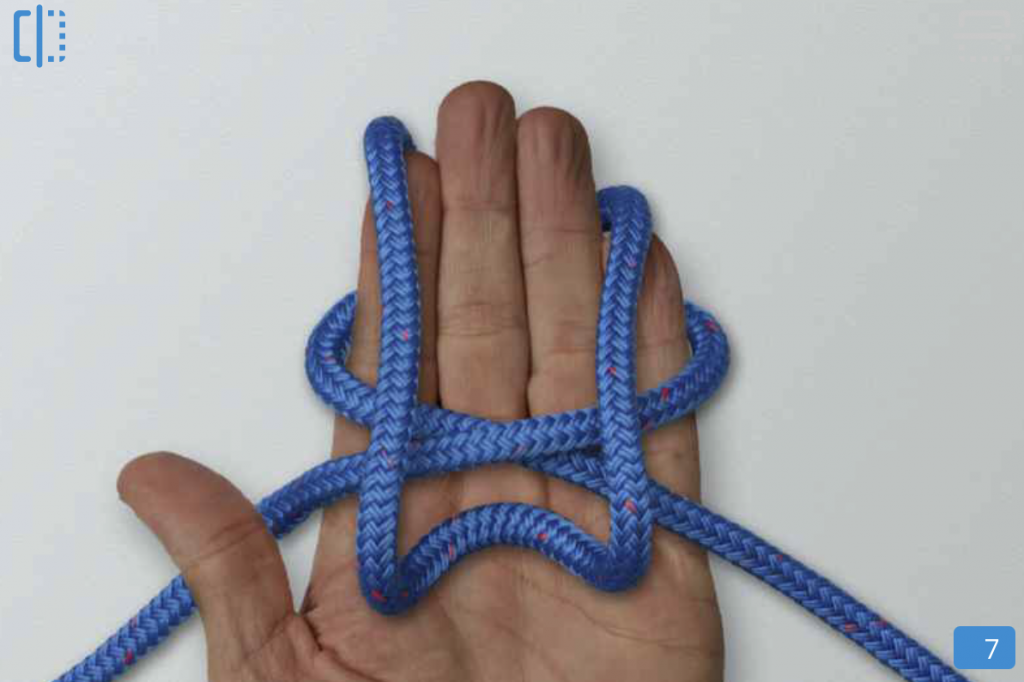Search by Keyword
El nudo mariposa alpino es un nudo para formar un lazo fijo en el medio de una cuerda. Puede ser hecho en una cuerda sin acceso al final de los extremos; esto es una ventaja cuando se trabaja con largas cuerdas de escalada. El nudo mariposa alpino es un nudo excelente de línea media de aparejos, es simétrico. En un contexto de escalada, es muy útil para líneas de travesía, algunas anclas, acortar eslingas de cable, y para aislar secciones dañadas de una cuerda.
Also known as alpine butterfly knot, butterfly loop, lineman’s loop, and lineman’s rider.
There are three common applications for the knot:
Mid-Point Tie-In
The Butterfly Knot forms a loop in the middle of a rope and is especially useful for the middle member of a rope team because it won’t deform after a pull in either direction.
Isolation of a Damaged Section of Rope
If you have a core-shot in a rope and need to continue to use it in order to finish your climb or get down, a butterfly knot is often the best way to isolate the damaged section of the rope. The in-line feature of the knot, and the ease of untying, both make this the best option in such a scenario.
Stopper Knot
Another use of the butterfly is as a stopper.
This video shows you another method for tying the Butterfly Knot.
The Butterfly Knot is most commonly tied on a bight to create a loop, with a carabiner then clipped into the loop.
There are times, however, when it can be advantageous to tie it so it is secured directly to a ring or around a pole by rethreading.
Knot Strength/Efficiency
The strength of a knot (or its efficiency) looks at the strength of a rope or cord with a knot compared to the strength of the same rope or cord without a knot. In the chart below we see that an un-knotted CMC Lifeline broke at an average of 10,090 lbf. With a butterfly knot tied in the rope it broke at 6,651 lbf when pulled end to end (with no load on the loop) and 7,720 lbf when the loop was loaded. Efficiency (or retained strength) was 66% when loaded end-to-end, and 77% when loaded loop to end.
Source: “Rescue Knot Efficiency Revisted” by John McKently, ITRS 2014



